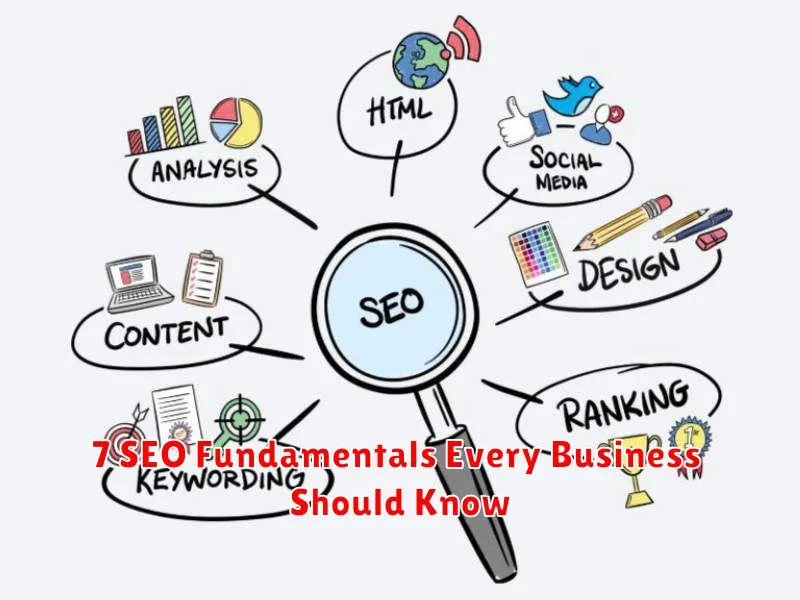In today’s digital landscape, a strong online presence is crucial for business success. Search Engine Optimization (SEO) is no longer a luxury, but a fundamental requirement for any business aiming to thrive. Understanding and implementing SEO fundamentals is essential to increase online visibility, drive organic traffic, and ultimately, boost revenue. This article outlines seven essential SEO fundamentals every business owner and marketer should know to establish a robust online presence and reach their target audience effectively.
Mastering these seven SEO fundamentals will empower your business to rank higher in search engine results pages (SERPs), attract more qualified leads, and outperform the competition. Whether you are a small startup or a large corporation, incorporating these core principles will set a strong foundation for sustainable online growth. This comprehensive guide will provide actionable insights to help you leverage the power of SEO and achieve your business objectives.
What is SEO and Why It Matters
Search Engine Optimization (SEO) is the practice of enhancing your website to improve its visibility on search engines like Google. By optimizing your site, you increase organic (non-paid) traffic, making it easier for potential customers to find you when searching for relevant products or services.
SEO matters because it plays a crucial role in online discoverability. Most online journeys begin with a search engine. If your website isn’t visible in relevant search results, you’re missing out on valuable opportunities to connect with your target audience. Improving your SEO can significantly impact your website traffic and, ultimately, your business growth. A higher ranking in search results often translates to increased brand visibility, credibility, and market share.
Understanding Search Intent
Search intent, also known as user intent, is the purpose behind a user’s search query. Understanding and addressing search intent is crucial for effective SEO. It’s not enough to simply rank for keywords; you need to rank for keywords that align with what users are actually seeking.
There are four main types of search intent:
- Informational: The user is seeking information. Examples include “what is SEO?” or “how to bake a cake.”
- Navigational: The user wants to go to a specific website. Examples include “Facebook login” or “New York Times.”
- Transactional: The user wants to buy something. Examples include “buy iPhone 14” or “cheap flights to London.”
- Commercial Investigation: The user is researching before making a purchase. Examples include “best laptops for gaming” or “top 10 hotels in Paris.”
By identifying the search intent behind relevant keywords, you can create targeted content that satisfies user needs and improves your search rankings. This involves analyzing the types of results that currently rank for those keywords and tailoring your content accordingly.
Keyword Research Basics
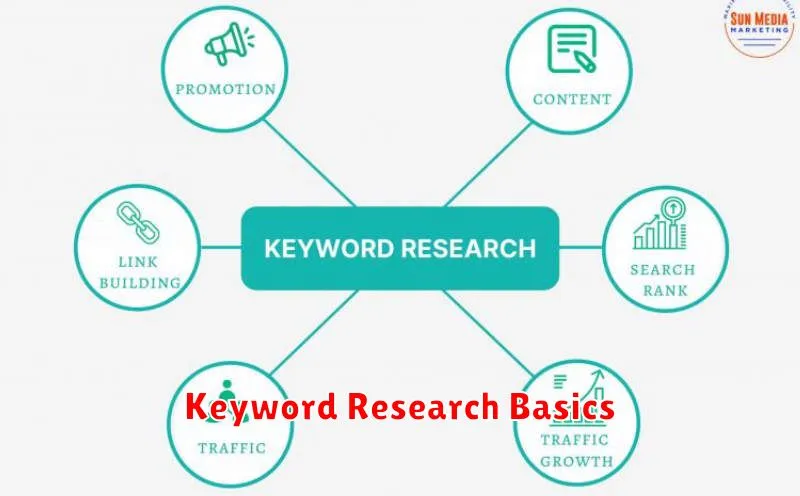
Keyword research is the foundation of any successful SEO strategy. It involves identifying the terms and phrases people use when searching online for products, services, or information related to your business. Understanding these search terms allows you to optimize your website content to rank higher in search engine results pages (SERPs).
Effective keyword research involves analyzing search volume (how often a keyword is searched), competition (how difficult it is to rank for a keyword), and relevance (how closely a keyword aligns with your business offerings). Targeting relevant keywords with high search volume and low competition is ideal.
Tools like keyword planners can assist in identifying valuable keywords and analyzing their metrics. Once you have a list of target keywords, you can strategically incorporate them into your website’s content, including page titles, headings, meta descriptions, and body text. This helps search engines understand what your website is about and increases your visibility to potential customers.
On-Page Optimization Essentials
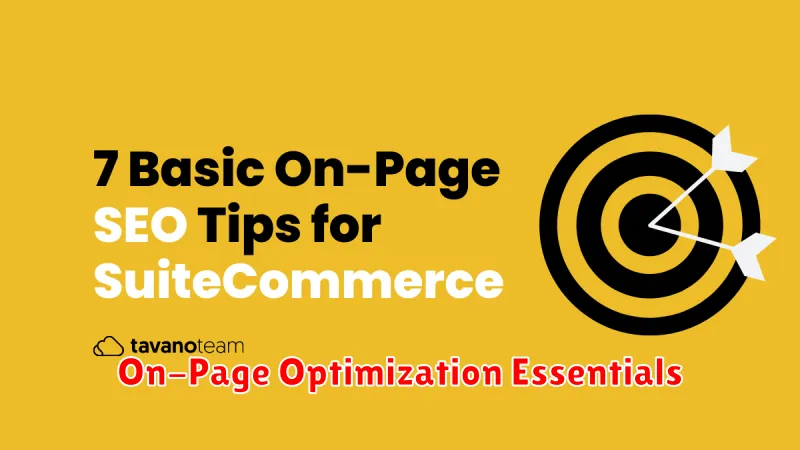
On-page optimization focuses on elements within your website that influence search engine rankings. It’s about making your site easily understandable for both search engines and users.
Key on-page factors include:
- Title Tags: Accurately describe the page’s content using relevant keywords.
- Meta Descriptions: Provide concise summaries that entice clicks from search results.
- Header Tags (H1-H6): Structure content logically and highlight important topics.
- Image Optimization: Use descriptive alt text for images to improve accessibility and searchability.
- Keyword Usage: Naturally incorporate relevant keywords within your content.
- URL Structure: Keep URLs short, descriptive, and easy to read.
- Content Quality: Provide valuable, engaging, and informative content that satisfies user intent.
Building Backlinks Naturally
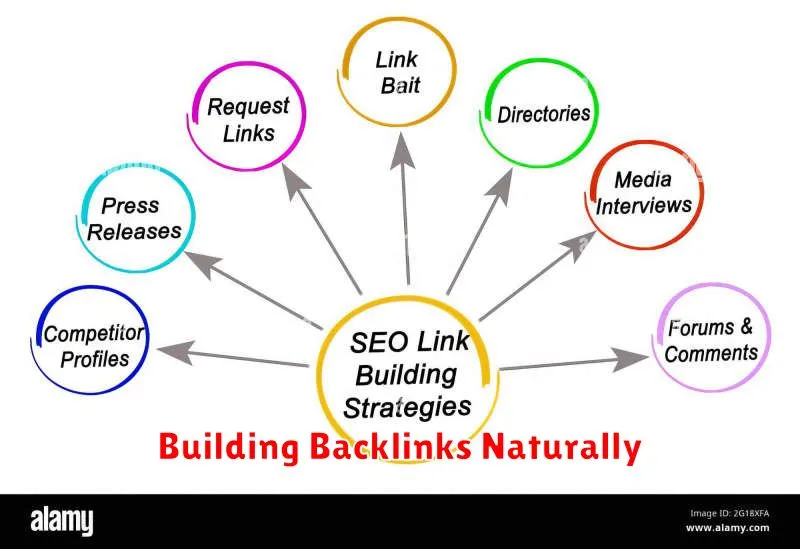
Backlinks, or inbound links, are links from other websites to your own. Search engines view them as votes of confidence, signifying your site’s authority and relevance. Earning high-quality backlinks is crucial for improving your search engine rankings.
Avoid artificial link-building schemes. Focus instead on creating high-quality content that others will naturally want to link to. This could include original research, informative blog posts, or helpful tools and resources.
Guest blogging on relevant websites within your industry is another effective strategy. By providing valuable content on other platforms, you can gain exposure to a wider audience and earn backlinks to your site. Promoting your content through social media and email outreach can also help attract backlinks.
Tracking SEO Performance
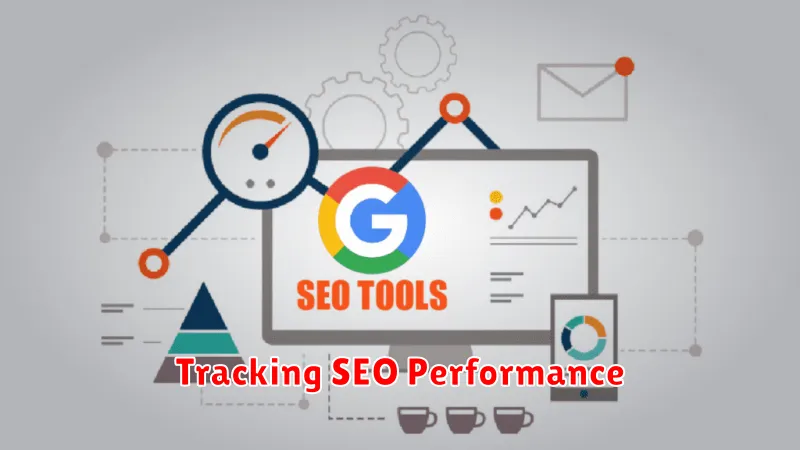
Measuring the effectiveness of your SEO strategy is crucial. Without tracking key metrics, you won’t know what’s working and what needs adjustment. This involves monitoring various aspects of your website’s performance.
Key metrics to consider include:
- Organic traffic: Track the number of visitors coming from search engines.
- Keyword rankings: Monitor where your website ranks for relevant keywords.
- Conversion rate: Measure how many visitors complete desired actions (e.g., purchases, sign-ups).
- Bounce rate: Analyze the percentage of visitors who leave your website after viewing only one page.
Utilize tools like Google Analytics and Google Search Console to gather this data. Regularly analyzing these metrics helps identify areas for improvement and ensures your SEO efforts are driving positive results for your business.
Adapting to Algorithm Updates
Search engine algorithms are constantly evolving. Staying ahead of these updates is crucial for maintaining visibility and ranking. Ignoring algorithm changes can lead to significant drops in organic traffic.
Monitoring is key. Regularly check your website’s performance using analytics tools. Look for any sudden changes in traffic or keyword rankings, which could signal the impact of an algorithm update.
Understanding the nature of updates is also important. Industry news sources and official search engine blogs often provide insights into the goals and impacts of updates. This knowledge allows you to make informed decisions about necessary adjustments.
Flexibility is essential. Be prepared to adapt your SEO strategy based on these updates. This might involve revising content, optimizing technical aspects of your site, or adjusting your link-building approach.

